

F-14 Tomcat:
History
Specifications
Bureau Numbers
Walk-Around
Squadrons
Photos
Books
Memorabilia
Other Topics:
Grumman A/C
EXTRA 400
A/C Photos
Links
Guestbook
Credits
The Author


|
Tactical Airborne Reconnaisance Pod

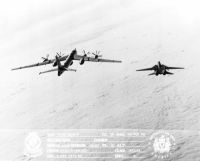
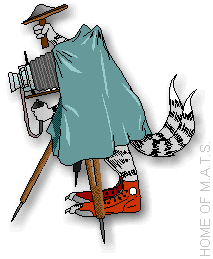 TARPS DI | TARPS CD
TARPS DI | TARPS CD
F-14 TARPS equipped ... or Peeping Tom. Until introduction of a replacement on the F/A-18, the TARPS was the only possibility for the Navy to
get tactical information about an area or target via a fast flying aircraft, the F-14. No other
platform - except unmanned recconnaisance drones - was able to perform this mission in the
Navy. Since the retirement of the RF-8, the RF-4B and various A-3 Skywarrior variants, the F-14
was the only aircraft for this role (and can carry at the same time a complete range of
air-to-air weapons!) until the introduction of a F/A-18 recce aircraft with reconnaisance
equipment instead of a gun!
TARPS equipped F-14s were modified with various systems. In addition, the weapon station 5 AIM-7 launcher was removed (see photos below).
Early prototype TARPS pods (see photo below on the left) had a little different shape plus fins
and were installed under the air inlet instead of an external fuel tank. They didn't become
operational and were only used with F-14 prototypes. It is not known to me, if they were
equipped with life cameras.
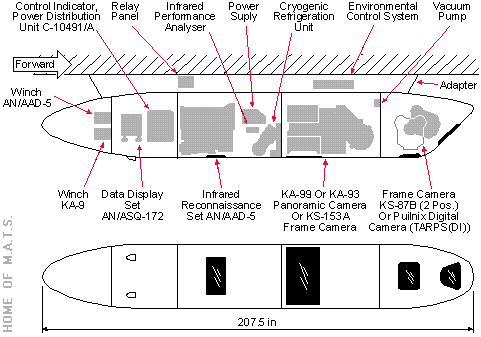
TARPS DI (TARPS Digital Imagery)
In September 1995 plans were issued to test a digital camera
system for the TARPS pod on the F-14. Just seven month later, by June 1996 VF-32 had modified
one of their Tomcats to carry the new pod, completed ground testing and test flights. In the
new TARPS DI pod the standard KS-87 camera is replaced by a Pullnix digital camera with one
vertical and one forward viewfinder. When a digital image is taken and stored in a solid-state
storage device, the RIO has several alternatives: He might send the image immediately to the
decision makers (who might immediately order a strike on the target) and leave the image in
storage for review/later transmission or he might store all images and wait for
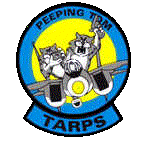 download after return to the carrier. If the image is transmitted immediately, it is done via the UHF radio in 30 to 180 seconds per image at a 175 nautical miles distance.
download after return to the carrier. If the image is transmitted immediately, it is done via the UHF radio in 30 to 180 seconds per image at a 175 nautical miles distance.
Before the introduction of the digital TARPS data transmission, the transfer of reconnaissance
photos was somewhat difficult. E.g. in the 1991 Gulf War F-14 TARPS reconnaissance missions did
not end on the aircraft carrier, but the processed TARPS photography was dropped by S-3 Vikings
over allied ground commanders to give them up-to-date target informations.
TARPS CD
The TARPS CD is the very latest development and until end of 1999 only the F-14Bs of VF-102 are
TARPS CD equipped.
Unlike the TARPS DI, the TARPS CD pod is a photo pod which is completely digital, providing more
than just photos. The TARPS CD
has it's own transmitter in the pod where on the TARPS DI, the digital image is transmitted to
the aircraft radios and relayed to an E-2C Hawkeye.
VF-102 extensively tested this new pod: Targets were identified and located with the TARPS CD and
instantly the data was relayed via E-2C to USS John F. Kennedy, where the TARPS CD data were
reconciled with national GPS coordinates. Within minutes, these improved target locations data
were transmitted to F/A-18s which followed the F-14s with 15 minutes delay. On arrival at the
target area, the Hornets were able to make high precision strikes against the targets. An invaluable
step ahead against mobile target!
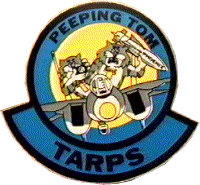 So by providing near real time target locations information, the F-14s TARPS CD sets a new
standard for tactical reconnaissance.
So by providing near real time target locations information, the F-14s TARPS CD sets a new
standard for tactical reconnaissance.
Specifications:
- Length 207.5 in
- Width 26.5 in
- Height 26.5 in
- Height plus Adapter 35.5 in
- Weight 1750 lbs
Click on image-icons to view an enlarged photo:








All graphics Copyright © Torsten Anft
|